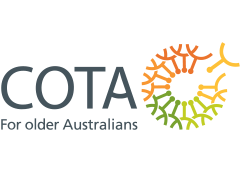How polio-affected Aussies achieved Paralympic and Olympic status
As the Paris Games take centre stage, it’s the perfect time to reflect on the stories of two Australians who survived polio and made their mark on the world stage. Elizabeth Edmondson was diagnosed with polio at just 15 months old and spent over a year in the hospital.

Key points:
- With the Paralympics in Paris highlighting the talent of athletes with disability, the achievements of other athletes with lesser-known disabilities should also be celebrated
- Elizabeth Edmondson and Max Baldwin were both diagnosed with polio as children, but both athletes competed at Paralympic and Olympic levels
- Polio Australia encourages Australians to understand more about post-polio effects and raise awareness in the upcoming Polio Awareness month
SPONSORED — The excitement is palpable in Paris as the world comes together to celebrate athletes’ incredible talents and determination at the Paralympic Games.
The 2024 Paralympics has brought together athletes from all over the globe, each with their own unique story of perseverance.
For many Australians watching from home, it’s a special time to cheer on the competing athletes from our communities.
As the Paris Games take centre stage, it’s the perfect time to reflect on the stories of two Australians who survived polio and made their mark on the world stage.
Elizabeth Edmondson was diagnosed with polio at just 15 months old and spent over a year in the hospital.
While other children were learning to walk, she was learning to move with the help of callipers — used to support affected legs — and parallel bars installed by her father at home.
However, Elizabeth began swimming at five years old and by the time she was 14, she competed at the 1964 Tokyo Paralympics.
Despite being the youngest athlete in the competition, she won three gold medals in swimming. She repeated her success at the 1968 Tel Aviv Games, earning two more gold medals and a silver medal.
Today, her achievements continue to inspire young athletes everywhere to dream big, no matter the obstacles.
Another incredible Australian story belongs to Max Baldwin. Born in Ballina, New South Wales, Max contracted polio before the age of two, which paralysed both legs and one arm.
Although he walked with crutches, he was inspired by Sister Elizabeth Kenny — a polio nurse — and began participating in sports.
Max found a passion for canoeing and after years of dedication, he represented Australia at the 1956 Melbourne Olympics as the first Australian athlete with a disability to compete in the Olympics.
As the Paralympics highlight the incredible achievements of athletes like Elizabeth and Max, Polio Australia encourages Australians to remember the thousands of people in Australia who still live with the after-effects of polio.
While the original polio epidemics might seem like a distant memory, many survivors now face new challenges with post-polio syndrome.
Post-Polio Syndrome (PPS) can cause fatigue, pain and other issues that make daily life a struggle, even for those who appeared to recover completely from the initial infection.
Polio Australia wants Australians to remain aware, recognise the signs and start meaningful conversations about the late effects of polio. Many people living with post-polio conditions may not even realise the cause of their symptoms, so being understanding is crucial.
By raising awareness about post-polio conditions, Polio Australia wants to ensure that everyone who has been touched by polio — whether in the past in an epidemic or today when developing post-polio — gets the care and respect they deserve.
Watch the Paralympics, share these incredible stories and support the Beyond Polio campaign in October, which is Polio Awareness Month.
Polio Australia encourages all Australians to celebrate the strength and determination of those who continue to fight, both on and off the field.
What are your favourite Paralympic sports to watch?
Let the team at Talking Aged Care know on social media.
For more information related to disability news, subscribe to the FREE weekly newsletter.
Relevant content:
An unknown number of Australians live with post-viral conditions










